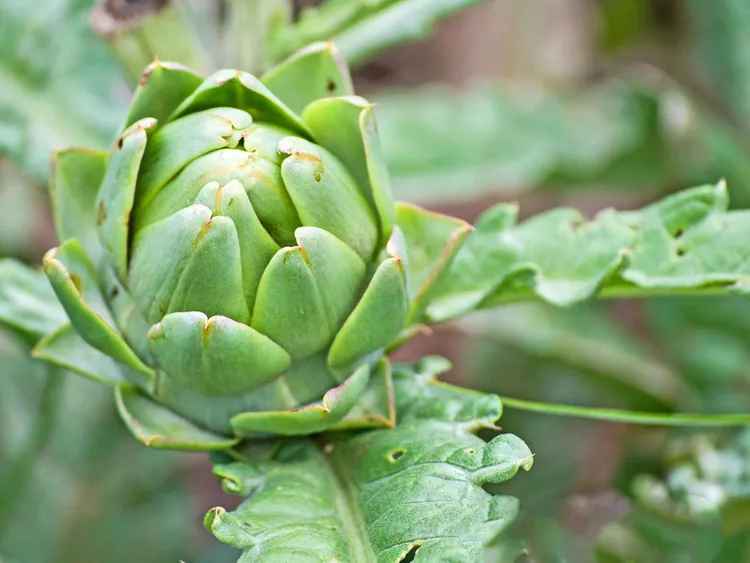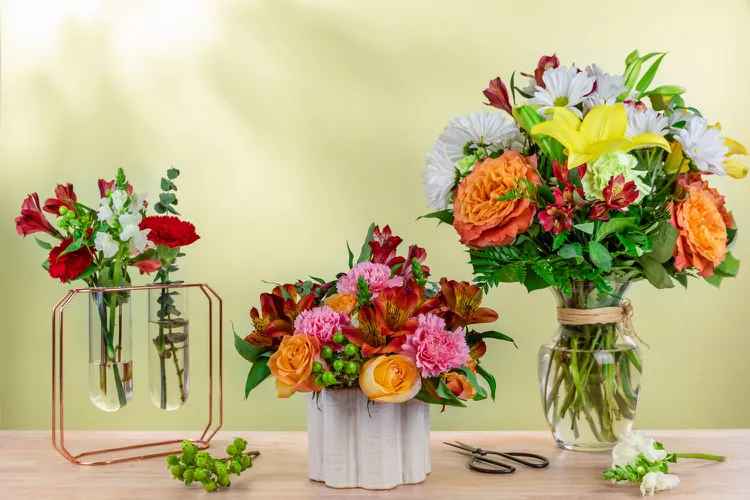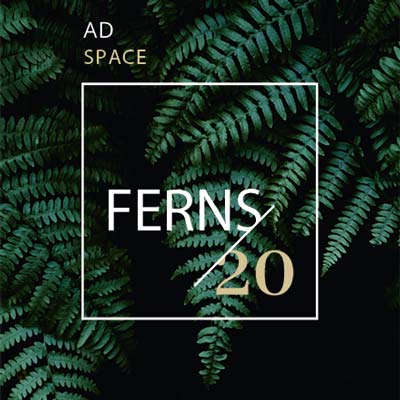If you have a garden that gets little sun, it’s a good idea to choose deer-resistant shade plants. This will allow you to enjoy Bambi without worrying about them destroying your yard. You’ll want deer-resistant plants in your garden if it gets little sunlight. This will allow you to watch Bambi without worrying about them wrecking your yard.
Be aware that ruminants will graze on any plant they can find. This means that no plant is truly deer proof. Some species are more resistant to deer than others.
There are plenty of deer-resistant plants and bulbs to choose from if you don’t have the most vibrant yard. We have selected 18 shade-loving plants that deer are not likely to damage or severely damage.
01
Barrenwort
Pink blooms of Epimedium (barrenwort).
Epimediums are drought-tolerant, clump-forming plants that look great in any shade garden. Their nodding, bright little flowers add a pop of color to the early spring garden, while their leaves are marked with striking red. Barrenwort is a low-maintenance perennial groundcover that resists deer. It’s perfect for under tree canopy in your yard.
Name: Barrenwort (Epimedium spp.)
USDA Hardiness Zones: 5 to 8
Flower Color: Pink, red, orange, purple, yellow
Soil Types: Sandy, loamy, moist, but well-drained
Height: 8-12 inches. tall, 12-36 in. Wide: 12 to 36 in.
02
Bleeding Heart
Close-up of the pink flowers of a bleeding hearts plant
The shade-loving plants have a unique appearance and are very fast-growing. The bleeding heart has heart-shaped blooms that hang from arched stems. Their common name comes from the single white petal that protrudes on each flower. They thrive in soils that are evenly moist, which promotes a blooming period of several weeks during spring.
Name: Bleeding heart (Lamprocapnos spectabilis)
USDA Hardiness Zones 3-9
Flower Color: White, pink, and red
Soil needs: moist, well-drained
Mature Size: 1-3 ft. tall, 2-3 ft. wide
03
Japanese Painted Fern
A group of Japanese painted ferns in a garden
The Japanese painted fern is one of the most shade-loving ferns. It also has a deer-resistant foliage. This species is slow-growing and has unique arching silvery-green fronds, with a purplish-variegated midrib. This species is easy to grow, and it tolerates deep shade. Make sure to choose a location with good drainage.
Name: Japanese painted Fern (Athyrium Niponicum).
USDA Hardiness Zones 3-8
Moisture but well-drained soil is best
Mature size: about 18 in. Height and width: 18 in.
04
Lungwort
A lungwort plant with pink flowers and speckled leaves.
Herbaceous perennial lungwort is not a favorite of deer. The tubular blooms are short-lived, but they add color to the landscape in spring. The fuzzy, speckled foliage will continue to add interest throughout the summer and fall.
They don’t want to compete for moisture with trees, so you should place them in shady areas under taller perennials.
Name: Lungwort (Pulmonaria spp.)
USDA Hardiness Zones 3-8
Flower Color: Pink, blue, and white
Soil needs: moist, well-drained
Mature: 6-12 in. tall, 12-18 in. Wide: 12-18 in.
05
Wild Ginger
Wild ginger covering the ground near a trunk of a tree
The plant is deer resistant and makes an excellent addition to any shade garden. The glossy leaves make for a dense and textural groundcover. This species is attractive to slugs and other snails.
Name: Wild ginger (Asarum Canadense)
USDA Hardiness Zones 3-7
Flower Color: Red
Moisture, Richness: Soil needs
Mature Size: 6 inches Height: 6 in.
06
Pig Squeak
Bergnia pink-purple flowers amongst foliage
When you hear the common name of bergenias, it’s easy to dismiss them. Pig squeaks, however, are deer resistant and spring blooming plants. Their attractive foliage changes to a rich brown color in the fall and remains through winter. This will add year-round appeal to your shade garden. They are low-maintenance plants that form clumps. All they need is rich, moist, soil.
Name: Pig squeak (Bergenia cordifolia)
USDA Hardiness Zones 3-8
Flower Color: Red, pink, white
Soil Needs: Moist, loamy, clay
Mature Size: 1-2 ft. tall, 1-2 ft. wide
07
Siberian Bugloss
The small blue flowers of Siberian bugloss and its lush foliage are spread out.
Siberian bugloss is distinguished by its vibrant and long-lasting flowers. They appear in the spring and can last up to four weeks. This slow-growing groundcover has blooms that are similar to those of forget-me not, which is also resistant to deer. However, Siberian bugloss prefers a shaded area in your yard.
Name: Siberian bugloss (Brunnera macrophylla)
USDA Hardiness Zones 3-8
Flower Color: Blue
Soil needs: moist, well-drained
Height: 18-30 in. tall, 18-30 in. Wide: 18-30 in.
08
Rue Anemone
Close-up of the light pink flowers on the rue anemone
This delicate perennial will look great in a woodland garden with a lot of shade. You will get an abundance of spring blooms if you provide the conditions that these plants prefer: moist and low light. Deer won’t eat them.
Name: Rue Anemone
USDA Hardiness Zones 4-8
Flower Color: White or pink
Needs: A well-drained soil
Height: 6-9 inches. tall, 6-9 in. Wide: 6-9 in.
09
Astilbe
Close-up of the light pink to purple blooms of the Astilbe
Astilbes, which are slow-growing perennials, require little maintenance and can be added to borders with dappled shading. The pastel-colored plumes of these long-lasting flowers will bloom throughout spring and summer. Lacy foliage provides a contrast to the soft pastel colors of the plumes.
Name: Astilbes species
USDA Hardiness Zones 3-8
Flower Color: Red, pink, purple, white
Soil Needs: Loamy, moist
Height: 6-24 inches. tall, 6-60 in. Wide – 6-60 in.
10
Bog Onion
Bog onion bloom close up
The Jack-in the-pulpit (also known as bog onion) is a perennial that grows slowly and has a tropical-like appearance. The hooded, cylindrical spathe is wrapped around a spadix that’s covered with tiny flowers. It flowers from mid-spring and only lasts a few weeks. However, the spathe is attractive throughout the summer. It is easy to grow this plant in moist soils.
Name: Bog onion (Arisaema triphyllum)
USDA Hardiness Zones 4-9
Flower Color: Greenish Purple
Soil Needs: Moist, humusy
Mature Size: 1 to 2 ft tall with a similar spreading
11
Corydalis
Corydalis blooming in purple and white
Corydalis hardy plants have showy, spring-appearing flowers that bloom for a long time, well into the summer. The delicate leaves contrast nicely with the more structural foliage in the landscape.
If you have moist soil that drains well, these plants will thrive. They can tolerate a shady area, but they are more sensitive to it than the other plants in this list. Very deep shade may result in leggy plant growth.
Name: Corydalis species
USDA Hardiness Zones 3-9
Flower Color: Variable depending on species
Soil Needs: Well-drained, moist
12
Japanese Pachysandra
Japanese pachysandra, a groundcover.
This shrubby, deer-resistant ground cover can grow anywhere. It thrives in full shade, clay soils, and even neglect. It is so invasive that it outcompetes native plants and can be classified as a weed in certain parts of the U.S.
Name: Japanese pachysandra (Pachysandra terminalis)
USDA Hardiness Zones 4-8
Clay, loam soils are the best for soils.
Size of mature: 6 in. tall, 12 in. Wide: 12 in.
13
Lily of the Valley
A group of Lily of the Valley with tiny white flowers.
The Lily of the Valley is another tough ground cover that thrives in shady areas. The delicate flowers of this plant will fill your yard in a pleasant fragrance. Deer won’t graze it. The berries are toxic to humans and pets.
Name: Lily-of-the valley (Convallaria Majalis)
USDA Hardiness Zones 3-8
Flower Color: White
Well-drained soil is best for the soil.
Height: 6-12 inches. tall, 9-12 in. Wide: 9-12 in.
14
Toad Lily
Purple toad-lily flowers in a cluster
The toad-lily is a great plant for a landscape that has an exotic look. The tall, hairy, light purple flowers with speckles are visible in the late summer and early autumn.
Plant them in a protected area to keep them from wind and to ensure that they thrive. Like all Liliaceae members, this deer-resistant flower is toxic to cats.
Name: Toad Lily (Tricyrtis Hirta)
USDA Hardiness Zones 4-8
Flower Color: Purple and white
Needs for soil: Moist, but not too wet
Mature Size: 2-3 ft. tall, 1-2 ft. wide
15
Foamflower
Cluster of pink-bloomed Foamflowers
Foamflowers, which are native to North America and bloom in spring, require very little care in order to flourish in shady areas of your yard. It is important to keep the soil evenly damp but not soggy. The mounds of leaves are unlikely to attract deer, and informal blooms with a foamy texture will not be attractive.
Name: Foamflower (Tiarella cordifolia)
USDA Hardiness Zones 3-8
Flower Color: White or pink
Loamy soil is best for soils.
Mature Size: 1-3 ft. tall, 6-12 in. 1-3 ft. tall, 6-12 in. wide
16
Primrose
Primrose flower close up.
You can choose from hundreds of shade-loving species of primrose, and don’t worry about deer nibbling the low-lying foliage or pretty clusters.
If you want to make sure your plants thrive, choose a species that can tolerate partial shade. For example, Primula vulgaris, which loves full shade. Primroses can be toxic to both people and animals.
Name: Primrose (Primula spp.)
USDA Hardiness Zones 3-8
Flower Color: Pink, red, orange, yellow and purple
Soil needs: moist, well-drained
Height: 8-20 in. tall, 8-20 in. Wide: 8-20 in.
17
Spiderwort
Spiderwort flower close up
Spiderworts are popular as landscape plants for a good reason. Many of the deer resistant species are extremely adaptable. They will grow in any light condition, even in full shade – although you may not get as many flowers – and are happy with most soils if they are evenly moist.
Although the blooms may only last for a single day, they are attractive to pollinators and there will be new flowers throughout spring and summer.
Name: Spiderwort
USDA Hardiness Zones 4-12
Flower Color: Purple, blue, pink
Moisture but well-drained soil is best
Mature Size: 1-3 ft. tall, 1-1.5 ft. wide
18
Lenten Rose
The delicate flowers of the Lenten Rose.
This small flower is no less beautiful, even though it belongs to the buttercup family. This early spring blooming Helleborus Orientalis hybrid is a slow-growing Helleborus Orientalis cross. Deer are not often bothered by this plant. These plants have a long blooming period up to 10 weeks and thrive in a shady spot that is evenly moist.
The lenten flower is toxic for both people and animals.
Name: Lenten Rose (Helleborus hybridus).
USDA Hardiness Zones 4-9
Flower color: white to pink to rose-purple
Moisture, drainage, and loamy soil are the best.
Mature Size: 12-18 in. Tall and wide





